Highlights
Families join CQT's X-perimental team
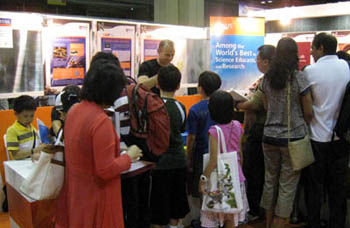
How do you interest kids in the theory of computing? After a busy weekend at X-periment!, a three-day science carnival organized as part as the Singapore Science Festival, CQT outreach volunteers would say that billiard balls and bubbles do the job nicely.
CQT took to the show a mechanical AND gate that processes billiard balls and a soap bubble computer that attempts to solve a minimum network problem. The chance to operate these strange computers drew kids in flocks. The experience is best captured in pictures: see the album on CQT's Facebook page.
Scientifically, the experiments illustrated the principle that computers can use different kinds of physics — opening minds to the idea of computers based on quantum physics. The exhibits also made clear that computation is a physical process, which underpins CQT researchers' investigations of the fundamental limits of information processing.
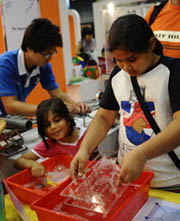
It is the first time the theoretical side of CQT research has been on display at X-periment! Last year, the quantum optics group offered visitors the chance to perform a quintessential quantum experiment: a violation of a Bell's inequality.
Speaking of Bell inequalities, CQT's Valerio Scarani gave a public talk on the subject in conjunction with X-periment! A video of his talk "An introduction to Bell's experiments: Welcome to the wonderful world of quantum physics" is available to watch here.
CQT thanks the NUS Faculty of Science for the invitation to share their booth at the event, which was organized by the Singapore Science Centre and the Agency for Science, Technology and Research (A*STAR).
Participating from CQT were Troy Lee, Senior Research Fellow, who came up with the concept; Yau Yong Sean, Mechanical Designer, who built the kit; Jenny Hogan, Outreach and Media Relations Manager, and a host of enthusiastic demonstrators over the weekend: Evon Tan, Esther Hänggi, Bill Rosgen, Alexander Ling, Lu Yin, Low Lerh Feng and Amit Rai.
Here are the posters CQT displayed. Click the image to see a larger version.
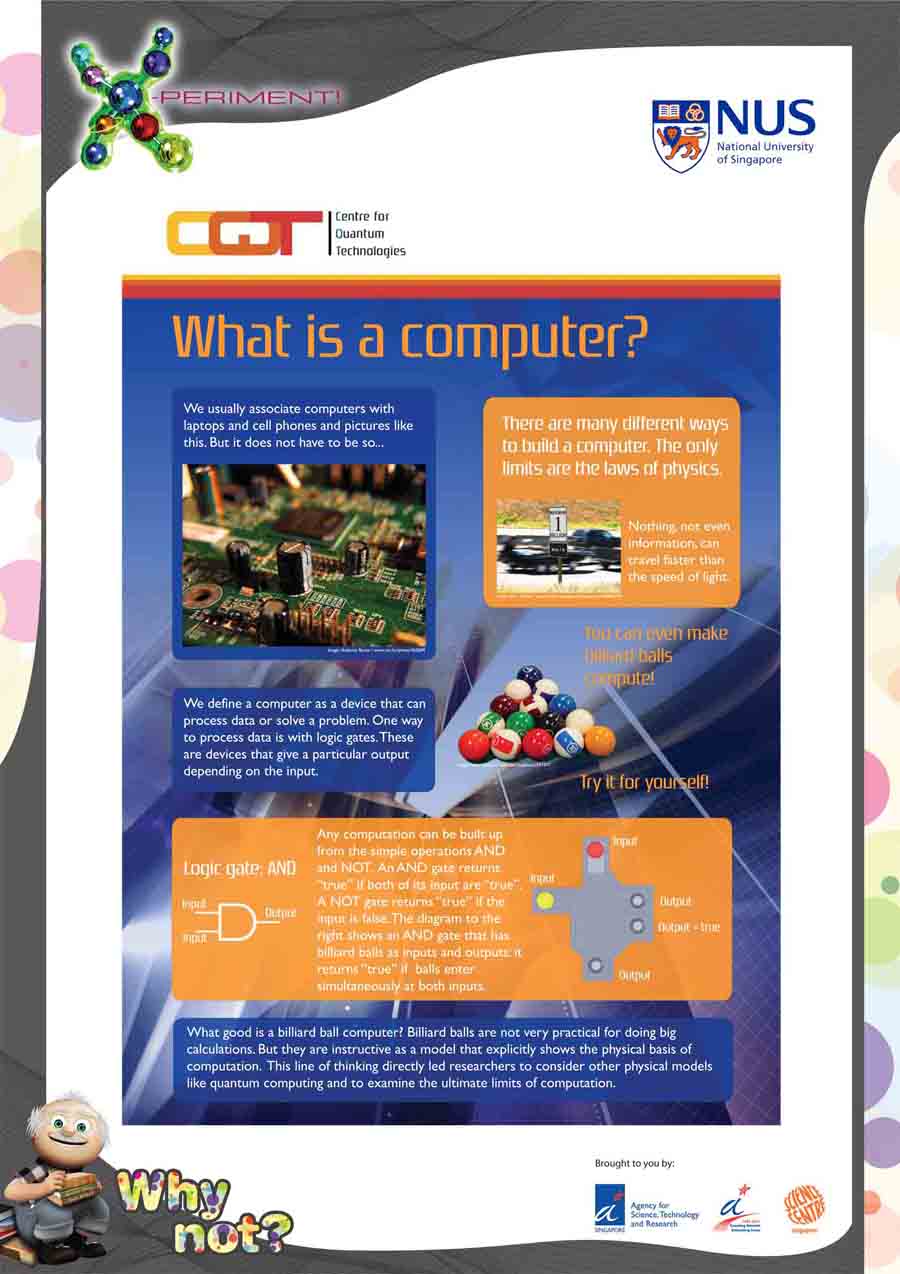 |
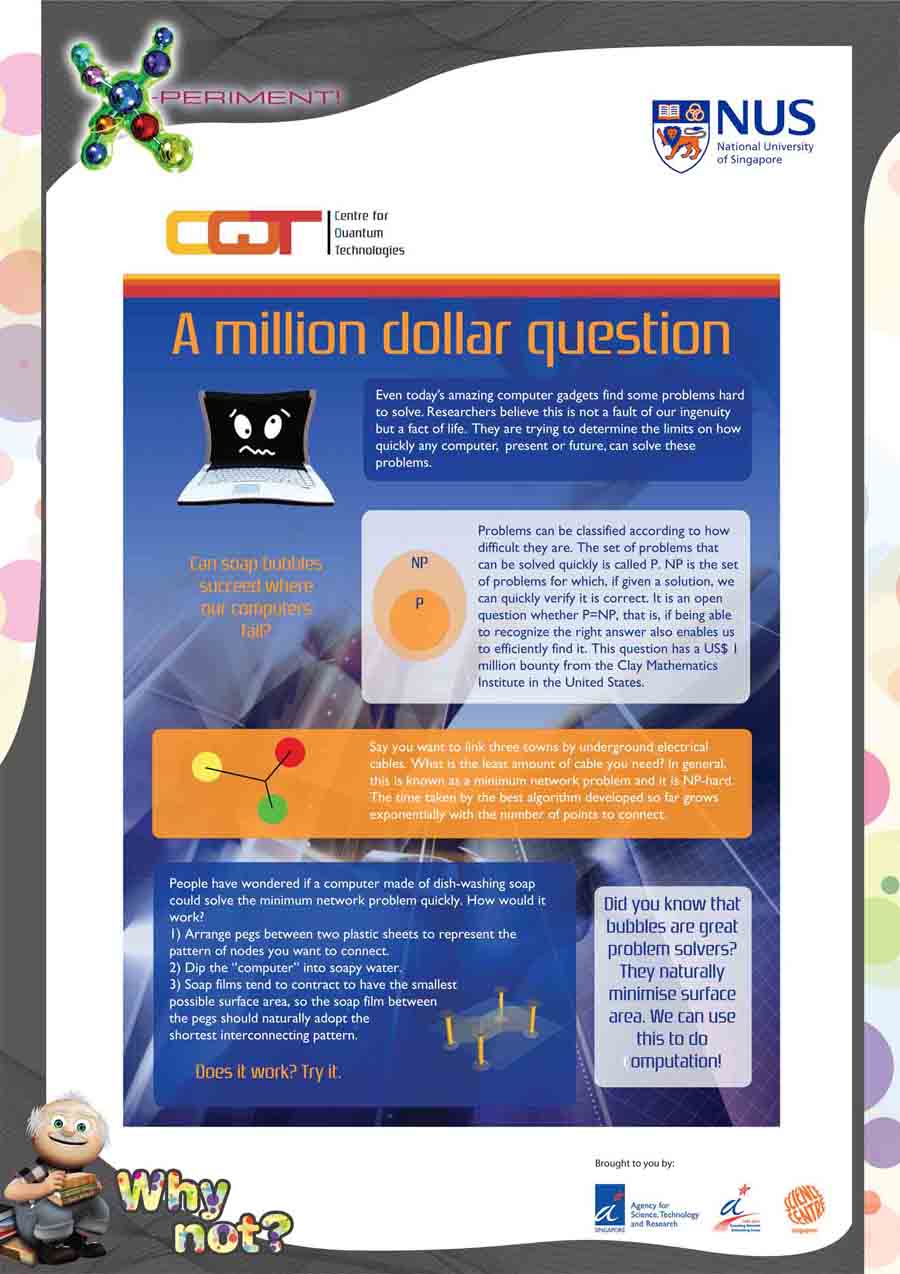 |
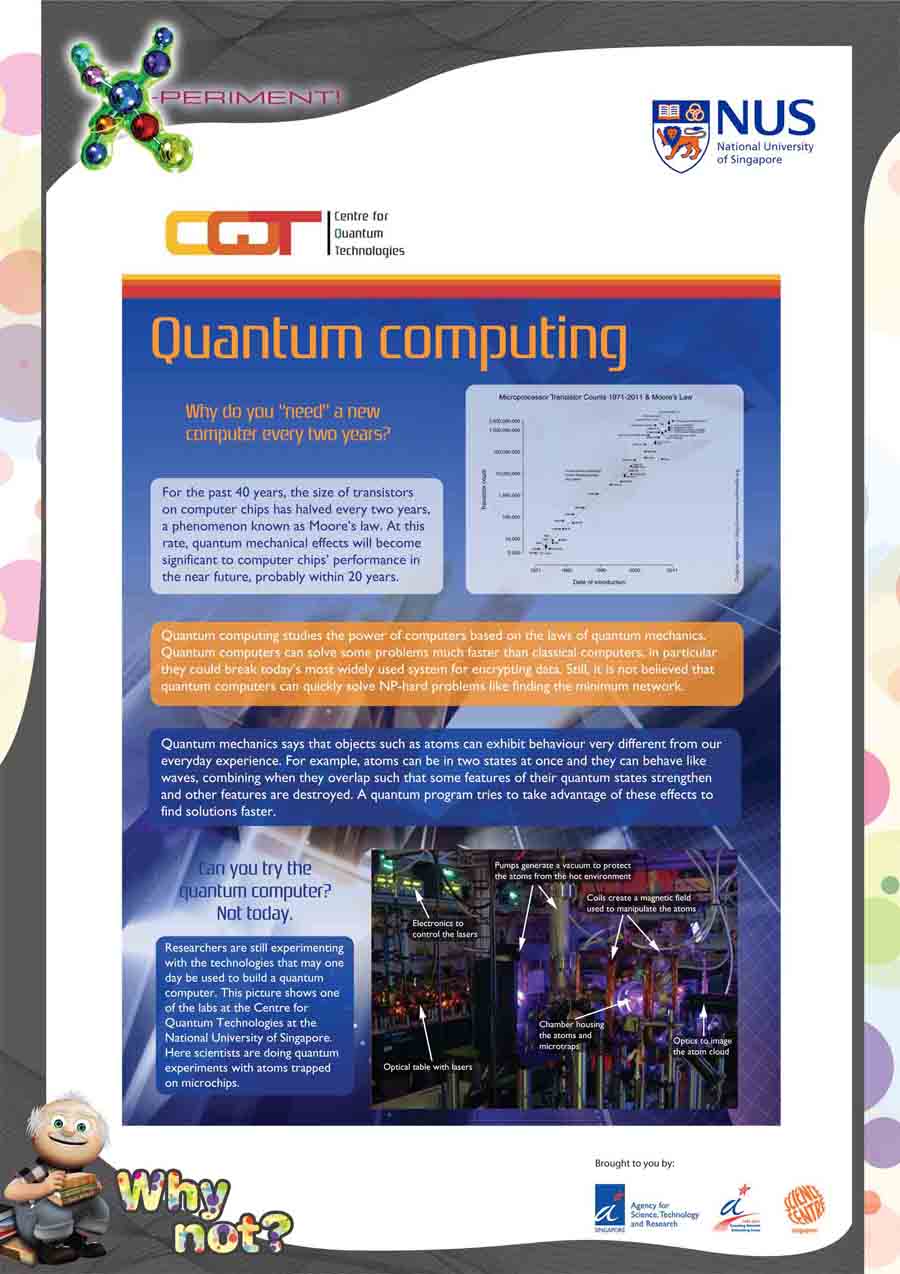 |






